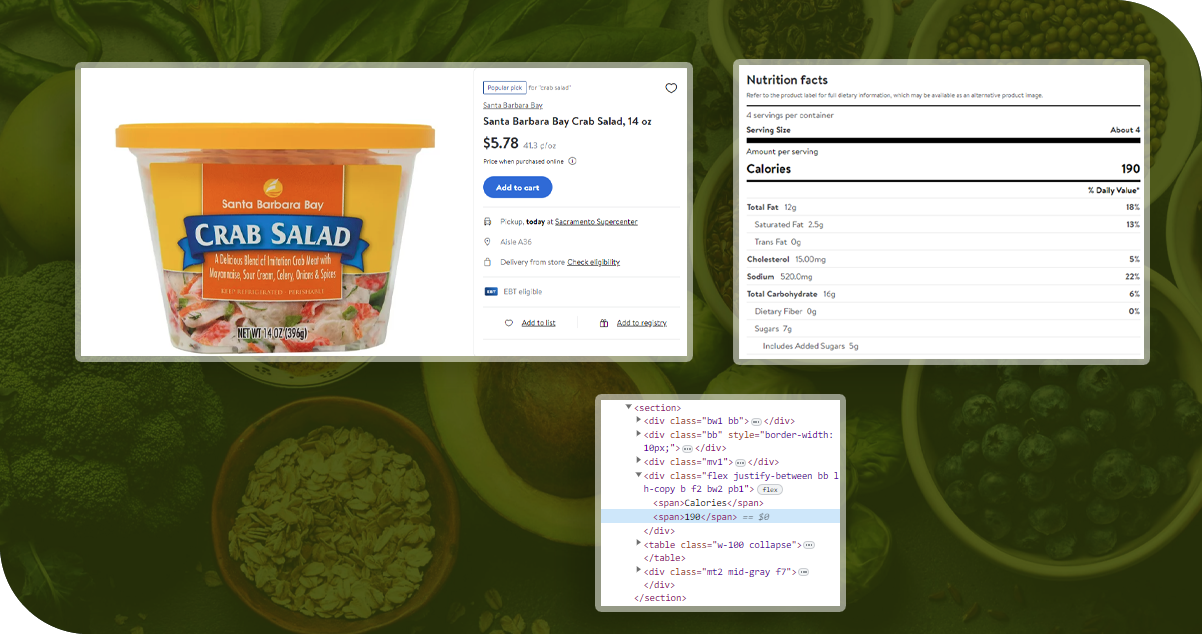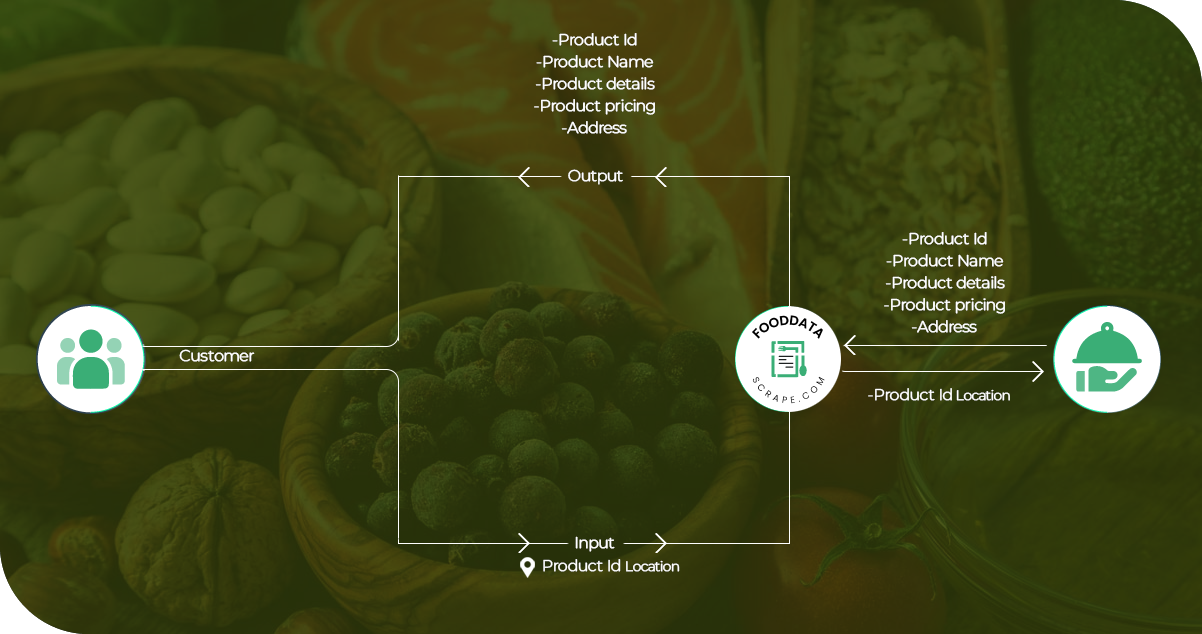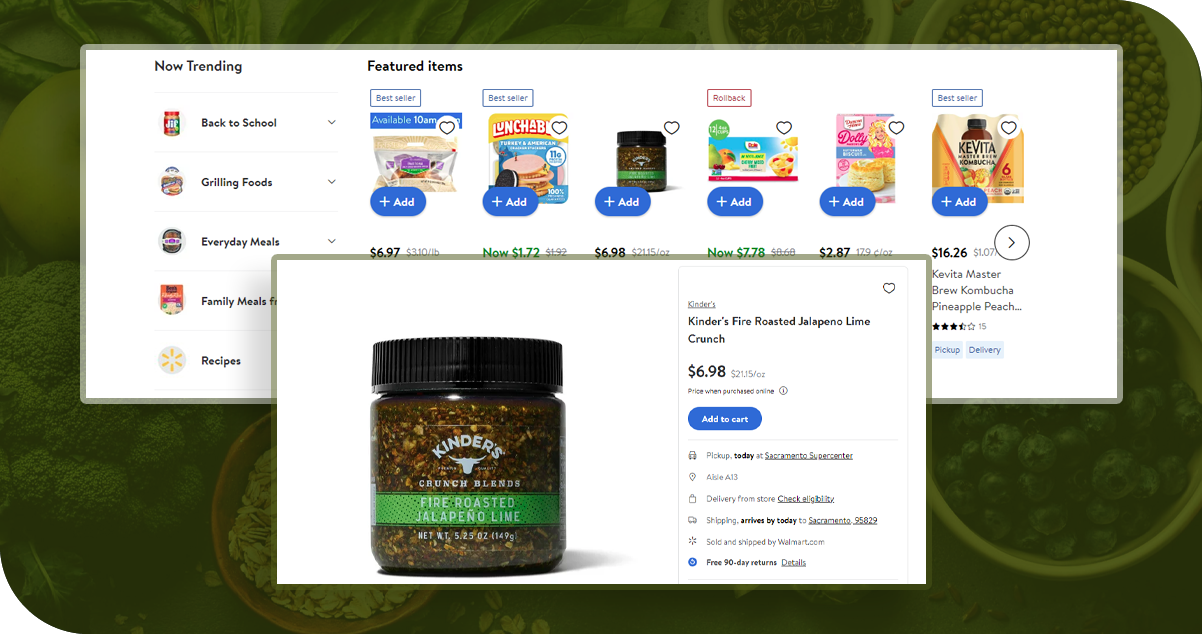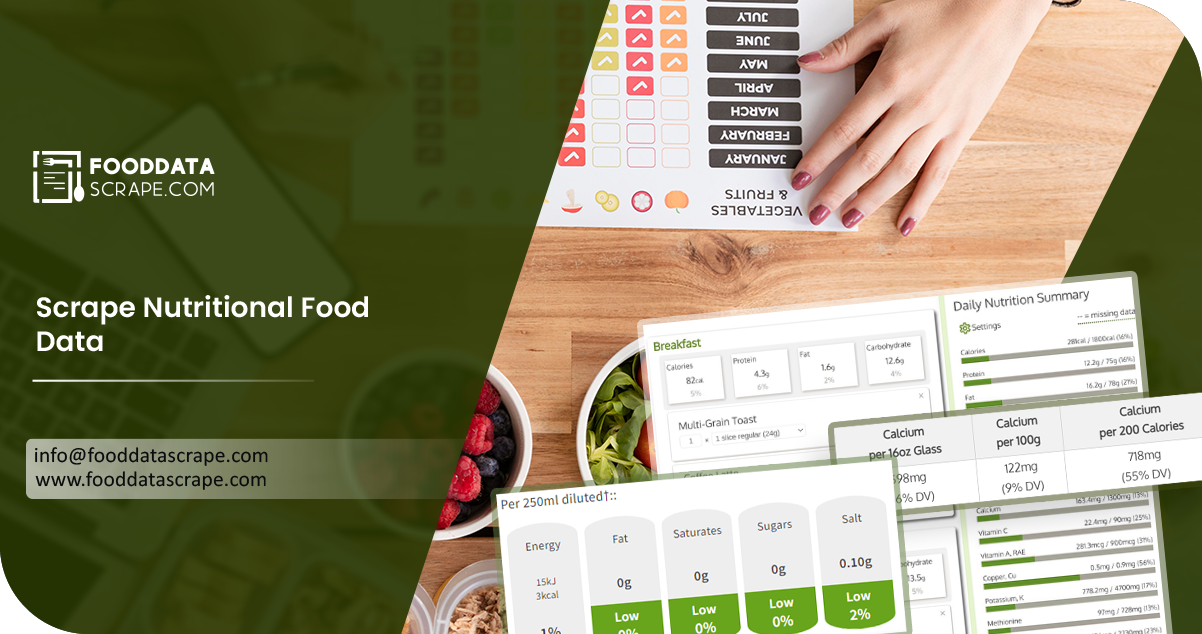The Client
Recognizing the escalating need for readily available nutritional data, our esteemed client, a distinguished business entity, envisioned a user-centric platform by scraping nutritional facts from Open Food Facts. This platform aimed to source information from food labels, restaurant menus, and user submissions. The objective was to forge a dependable solution aiding users in managing dietary choices, monitoring nutrient consumption, and achieving optimal health objectives.
Key Challenges

Ensuring Data Accuracy: The task of nutrition facts food data app scraping from diverse origins proved challenging. With variations in ingredients and nutritional values among food items, maintaining accuracy was vital to prevent misleading guidance.
Standardizing Data: The data arrived in assorted formats, units, and languages, demanding robust data processing algorithms to homogenize and present it coherently for users.
Managing User-Generated Content: Enabling user submissions introduced the potential for unreliable data. Striking a balance between user engagement and data accuracy emerged as a critical consideration.
Navigating Regulatory Requirements: Conforming to regional and global regulations governing nutrition labeling and health claims was imperative, presenting a complex compliance challenge for the platform.
Key Solutions
Data Collection Strategy: Our nutritional food data aggregator devised a multi-faceted approach, combining web crawlers for online data extraction, direct collaboration with food manufacturers for product details, and integration with restaurant databases for menu information retrieval.
Data Refinement: Employing a blend of machine learning and human verification to scrape nutrition facts food data, we processed and standardized collected data. We can use natural language processing algorithms to extract relevant data from product descriptions and menus.
Community-Sourced Content: We implemented a meticulous verification mechanism. User-generated inputs underwent scrutiny through flagged reviews, while community voting bolstered accuracy assurance.
Robust Database Structure: A comprehensive database emerged, encompassing a broad spectrum of food nutritional information. Its user-friendly organization facilitated effortless user search, filtering, and retrieval.
Intuitive User Interface: We crafted a user-centric app interface, enabling effortless food searches, nutritional data access, and daily intake tracking. Personalization options included goal setting and tailored recommendations.
Adherence to Regulations: By collaborating with nutritionists and legal experts, our data scraping services ensured stringent adherence to regional nutritional labeling mandates and health claims regulations. It preserved the platform's compliance integrity.
Methodologies Used

- Platform Selection: We chose Open Food Facts as our primary data source due to its open and collaborative nature, providing a comprehensive database of food products and their nutritional information.
- Data Extraction: We extracted data from Open Food Facts' website using web scraping techniques. Our web crawlers systematically navigated the platform's pages to gather information on various food products.
- Data Parsing and Structuring: We parsed the collected data to extract relevant nutritional information once extracted. It involved identifying specific data points such as calories, nutrients, ingredients, and serving sizes. We then structured this data into a standardized format for consistency.
- Data Validation: Ensuring data accuracy was a critical step. We implemented data validation processes to identify and rectify potential errors or inconsistencies within the scraped data. This quality control measure helped maintain the reliability of the collected nutritional information.
- Database Integration: We integrated refined and validated data into our existing database system. This involved organizing the data in a structured manner, making it easily searchable and retrievable for users seeking detailed nutritional information about various food products.
Advantages of Collecting Data Using Food Data Scrape

Data Accuracy and Consistency: Data scraping involves automated processes that extract information directly from the source. It minimizes the risk of human error during manual data entry. As a result, the collected nutritional information is more accurate and consistent, reducing discrepancies and inaccuracies that could arise from human intervention or transcription errors.
Time Efficiency: Manual collection of nutritional data from various sources can be time-consuming and labor-intensive. Data scraping streamlines the process by automating data retrieval. It allows for the swift accumulation of a wide range of nutritional information without requiring individuals to input data, saving valuable time and resources manually.
Real-Time Updates: Data scraping provides access to the most current nutritional information available from various sources. Schedule the automated scraping processes at specific intervals, ensuring the data remains up-to-date. This real-time access to information is crucial for users seeking accurate details about food products and their nutritional content.
Large-Scale Data Retrieval: Data scraping enables the simultaneous extraction of data from multiple sources. This capacity for large-scale data retrieval supports the creation of a comprehensive nutritional database. As food products vary widely in terms of ingredients and nutritional values, the ability to gather data from numerous sources enriches the dataset and provides a more holistic view.
Customization and Analysis: Organize and structure the scraped data to meet specific user preferences. Users can filter and search for information relevant to their dietary needs, preferences, and restrictions. Moreover, the collected data can be analyzed, enabling users to compare nutritional values, track their intake, and tailor their diets to individual health goals.
Informed Decision-Making: Access to accurate nutritional data empowers users to make informed choices about their dietary consumption. Individuals can identify food products that align with their nutritional requirements and goals. Researchers and health professionals can also leverage the data for evidence-based recommendations, helping users make optimal decisions for their health and well-being.
Results: We effectively extracted nutritional food data from Open Food Facts. Our client harnessed this information to enhance dietary insights, empower users with accurate nutritional details, and facilitate healthier lifestyle choices.
























































































